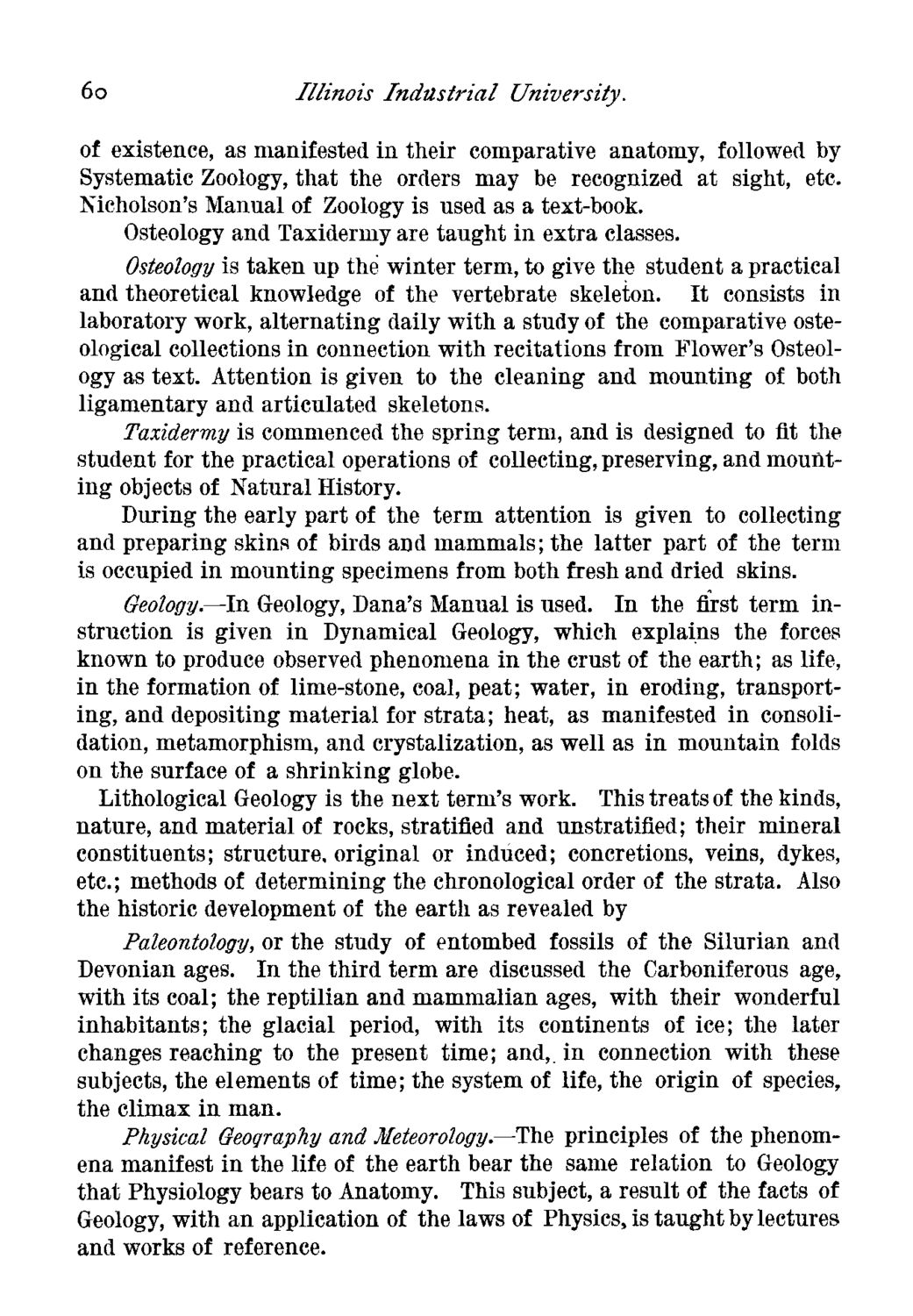| |
| |
Caption: Course Catalog - 1881-1882
This is a reduced-resolution page image for fast online browsing.

EXTRACTED TEXT FROM PAGE:
60 Illinois Industrial University. of existence, as manifested in their comparative anatomy, followed by Systematic Zoology, that the orders may be recognized at sight, etc. Nicholson's Manual of Zoology is used as a text-book. Osteology and Taxidermy are taught in extra classes. Osteology is taken up the winter term, to give the student a practical and theoretical knowledge of the vertebrate skeleton. It consists in laboratory work, alternating daily with a study of the comparative osteological collections in connection with recitations from Flower's Osteology as text. Attention is given to the cleaning and mounting of both ligamentary and articulated skeletons. Taxidermy is commenced the spring term, and is designed to fit the student for the practical operations of collecting, preserving, and mounting objects of Natural History. During the early part of the term attention is given to collecting and preparing skins of birds and mammals; the latter part of the term is occupied in mounting specimens from both fresh and dried skins. Geology.—In Geology, Dana's Manual is used. In the first term instruction is given in Dynamical Geology, which explains the forces known to produce observed phenomena in the crust of the earth; as life, in the formation of lime-stone, coal, peat; water, in eroding, transporting, and depositing material for strata; heat, as manifested in consolidation, metamorphism, and crystalization, as well as in mountain folds on the surface of a shrinking globe. Lithological Geology is the next term's work. This treats of the kinds, nature, and material of rocks, stratified and unstratifled; their mineral constituents; structure, original or induced; concretions, veins, dykes, etc.; methods of determining the chronological order of the strata. Also the historic development of the earth as revealed by Paleontology, or the study of entombed fossils of the Silurian and Devonian ages. In the third term are discussed the Carboniferous age, with its coal; the reptilian and mammalian ages, with their wonderful inhabitants; the glacial period, with its continents of ice; the later changes reaching to the present time; and,, in connection with these subjects, the elements of time; the system of life, the origin of species, the climax in man. Physical Geography and Meteorology.—-The principles of the phenomena manifest in the life of the earth bear the same relation to Geology that Physiology bears to Anatomy. This subject, a result of the facts of Geology, with an application of the laws of Physics, is taught by lectures and works of reference.
| |